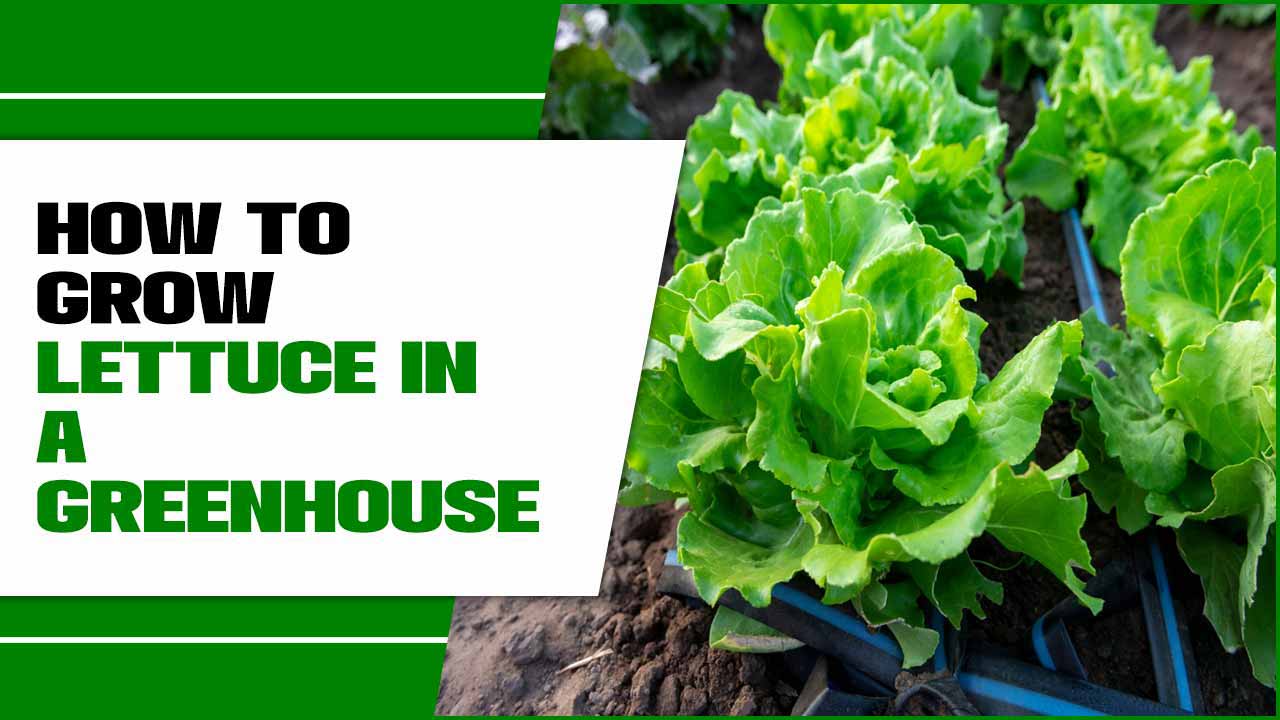Romaine lettuce, also known as cos lettuce, is a popular leafy green in many cuisines around the world. Its crisp texture and slightly bitter taste make it a versatile ingredient in salads, sandwiches, and wraps.
While it is readily available in grocefry stores, something is rewarding about growing your romaine lettuce from seed to harvest. It allows you to have a constant supply of fresh, organic lettuce and gives you a sense of accomplishment and connection to your food.
However, cultivating romaine lettuce can be tricky, especially for novice gardeners. Growing romaine lettuce from seed to harvest will provide you with all the necessary information and step instructions to grow romaine lettuce in your own backyard successfully. From selecting the right seeds to harvesting the crisp leaves, we will cover everything you need to know to become a successful romaine lettuce grower.
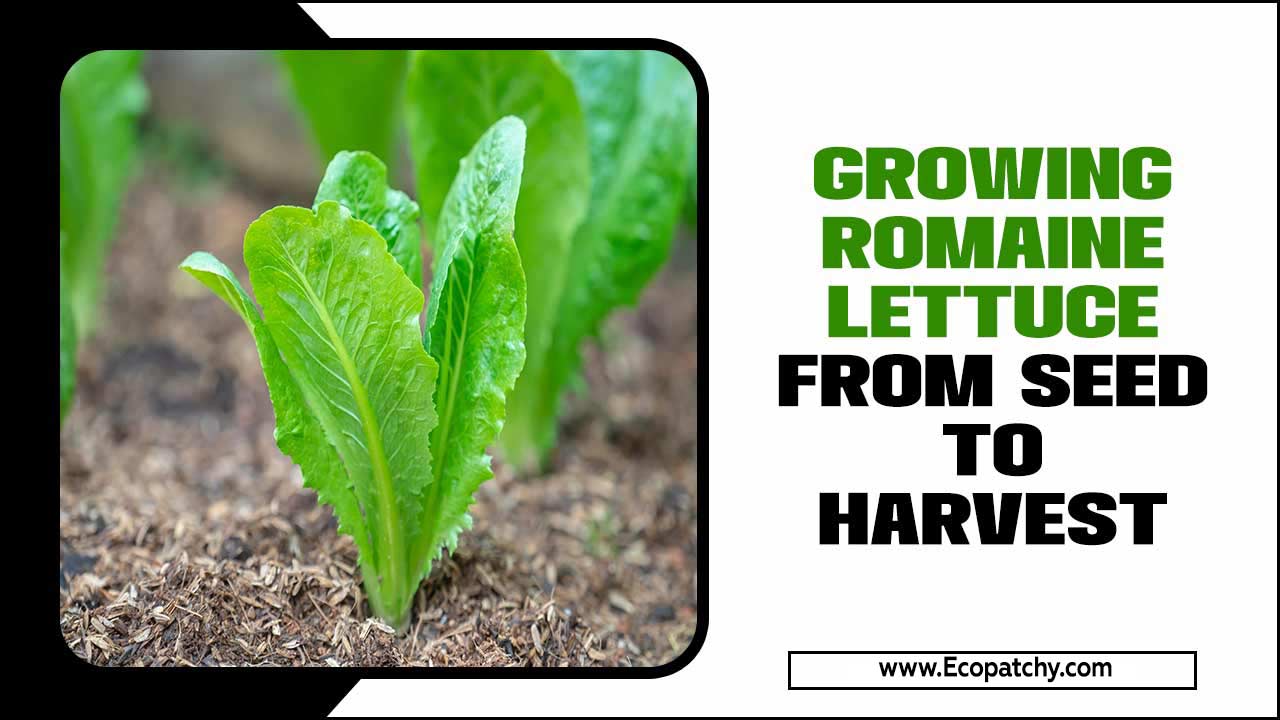
What Is Romaine Lettuce?
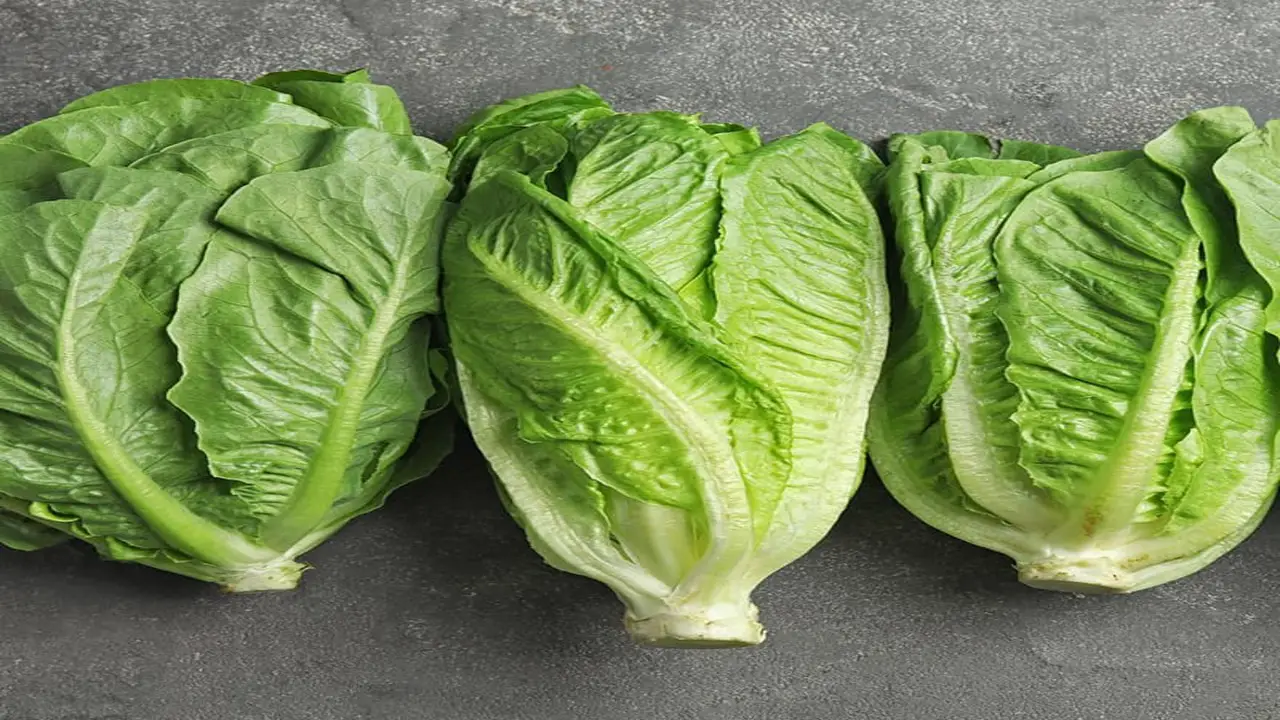
Romaine lettuce, also known as cos lettuce, is a popular variety of lettuce that is widely consumed for its crisp texture and mild, slightly bitter flavor. This leafy green vegetable is characterized by its long, sturdy leaves that form a tall, upright head. Romaine lettuce is often used in salads and sandwiches but can also be cooked and added to various dishes.
It is rich in essential nutrients such as vitamins A, K, and folate, making it a nutritious addition to any diet. Whether you’re a seasoned gardener or new to growing your produce, romaine lettuce can be a rewarding crop to cultivate from seed to harvest.
Why You Should Be Growing Romaine Lettuce
Growing romaine lettuce offers many benefits worth cultivating in your garden. One of the main advantages is the ability to enjoy fresh, homegrown salads all season long. By growing romaine lettuce, you can have a continuous supply of nutritious greens at your fingertips.
Additionally, when you harvest your romaine lettuce, you can be confident that it is free from pesticides and other harmful chemicals, ensuring the health and safety of you and your family. Romaine lettuce also provides versatility in the kitchen, as it can be harvested at various stages, from tender baby greens to mature heads.
This flexibility allows you to experiment with different recipes and culinary creations. Whether you’re a seasoned gardener or a beginner, growing romaine lettuce can be a rewarding and satisfying experience that adds flavor and freshness to your meals.
Romaine Lettuce Varieties
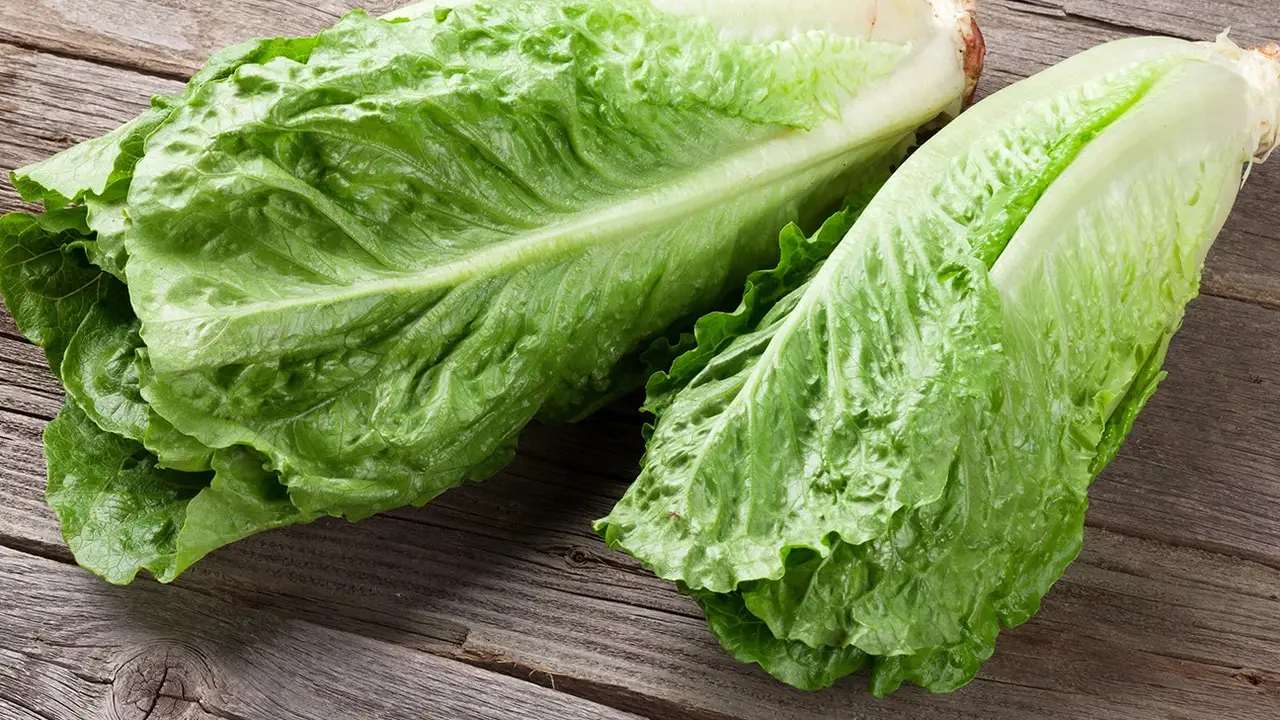
When it comes to growing romaine lettuce, there are several popular varieties. Here are some of the most common romaine lettuce varieties:
- Little Gem: This variety is known for its small size and compact heads. It has a sweet and crisp flavor, making it perfect for salads or sandwiches.
- Parris Island: Parris Island is a classic romaine lettuce variety with long, dark green leaves and a crunchy texture. It is resistant to bolting, making it a reliable choice for home gardeners.
- Cos: Also known as “Romaine” lettuce, this variety features tall heads with thick, crisp leaves. It has a slightly bitter taste and is often used in Caesar salads.
- Rouge d’Hiver: This French heirloom variety has delicate flavors and red-tinted leaves. It is cold-tolerant and can be harvested throughout the winter months.
When selecting the romaine lettuce varieties for your garden, consider factors such as taste preference, growth habits, and resistance to pests or diseases. Experimenting with different varieties can add diversity to your garden and provide you with various flavors and textures to enjoy.
3 Ways Of Planting Growing Romaine Lettuce From Seed To Harvest
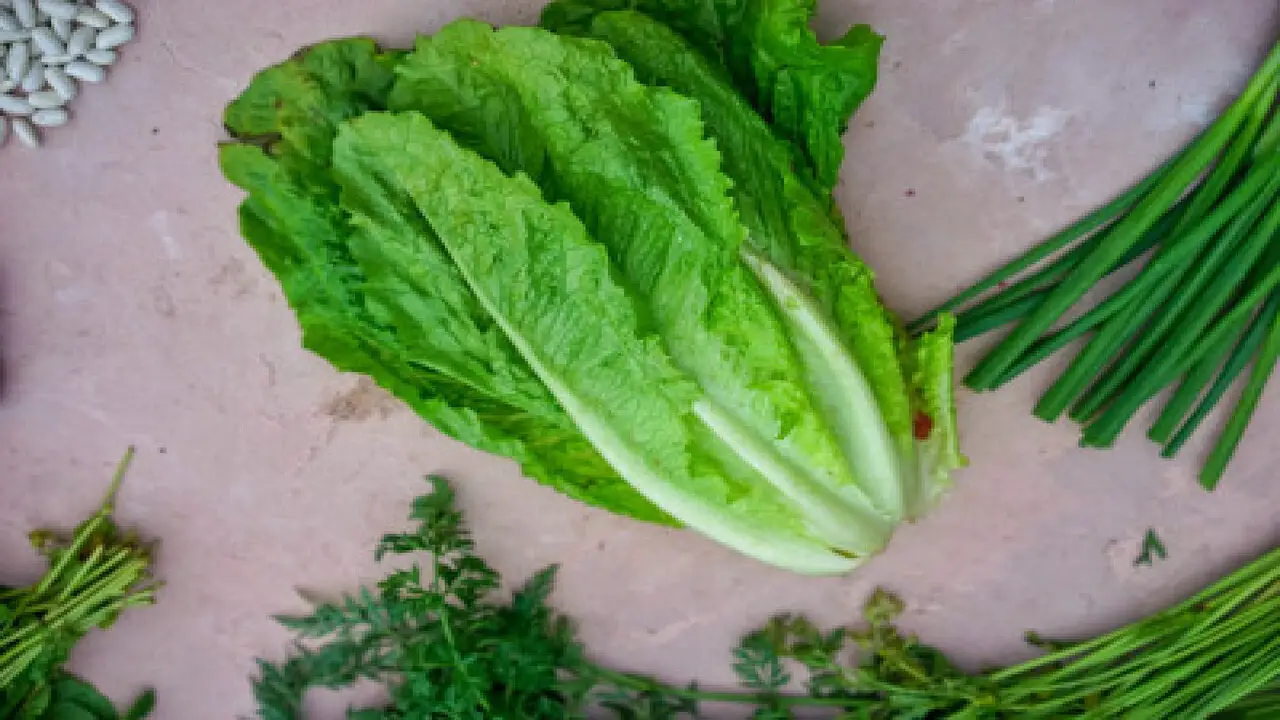
When it comes to growing romaine lettuce from seed to harvest, there are several methods you can choose from. Regardless of your chosen method, monitor your romaine lettuce plants closely for pests and diseases, provide adequate water and nutrients, and harvest when the leaves are crisp and full-grown for optimal flavor. Here are three popular ways of Growing Romaine Lettuce-From Seed To Harvest:
Option 1:Planting From Transplants
To start growing romaine lettuce from transplants, head to your local nursery or garden center and purchase healthy romaine lettuce transplants. Dig a hole in your garden deep enough to accommodate the transplant’s roots, gently place it in the hole.
Make sure to backfill the hole with soil, ensuring the top of the transplant is level with the soil surface. After planting, give the transplants a thorough watering to help them establish. This method is convenient for gardeners to get their romaine lettuce plants off to a strong start without waiting for seeds to germinate.
Option 2:Starting Seeds Indoors
To start growing romaine lettuce from seed indoors, begin 4-6 weeks before the last frost date. Fill seed trays or pots with well-draining soil and plant the seeds. Ensure the soil remains evenly moist and provide sufficient light for seed germination.
Once the seedlings have true leaves, transfer them into larger pots or seed trays. Harden off the seedlings gradually by exposing them to outdoor conditions before planting them in your garden. By starting seeds indoors, you can get a head start on your romaine lettuce and enjoy homegrown lettuce earlier in the season.
Remember to compost the soil for better fertilization and use plastic bags to create a greenhouse effect for improved germination. With proper care, you can grow healthy romaine lettuce from seed indoors.
Option 3:Planting Seeds Outdoors
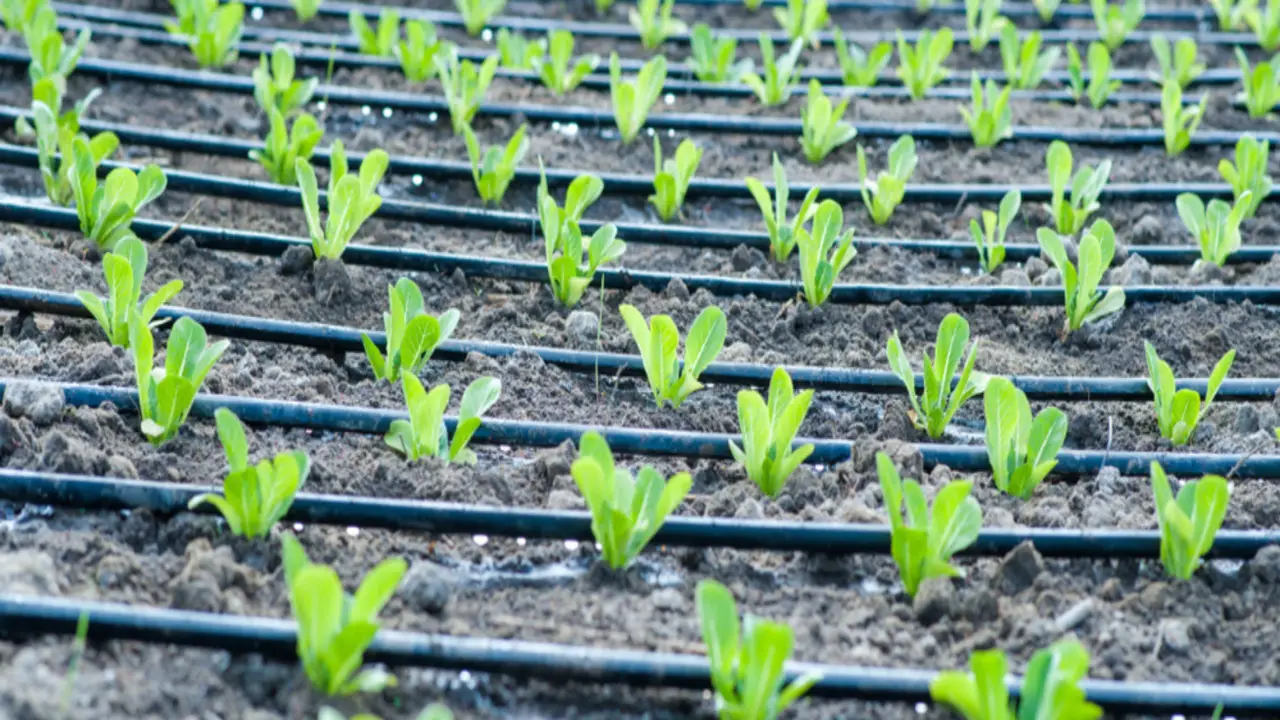
To plant romaine lettuce seeds outdoors, wait until the soil temperature reaches around 55°F (13°C). Once the soil is ready, prepare the garden bed by loosening the soil and removing any weeds. Create furrows about 1/4 inch deep in the soil, and space them according to the seed packet instructions.
Carefully place the romaine lettuce seeds in the furrows and cover them with soil. Afterward, gently water the area to ensure proper moisture for germination. This method allows gardeners to grow their romaine lettuce from seed, which is a great way to ensure a fresh supply of homegrown lettuce throughout the growing season.
Remember to provide proper weed control and fertilization to promote healthy growth. By planting seeds outdoors, you have the opportunity to grow different varieties of lettuce and enjoy the entire plant, from leaf lettuce to the entire head.
Growing Romaine Lettuce In The Fall
Growing romaine lettuce in the fall can be a rewarding experience for both experienced gardeners and beginners. Romaine lettuce is a cool-season crop that thrives in cooler temperatures, making it an ideal choice for fall planting. To grow romaine lettuce in the fall, select a sunny spot in your garden with well-draining soil. Prepare the soil by removing weeds or debris and loosening it with a garden fork or tiller.
Sow your romaine lettuce seeds directly into the soil, spacing them according to the seed packet instructions. Water the seeds gently but thoroughly to ensure good germination. As the plants grow, thin them out to provide enough space for them to develop properly.
Keep the soil consistently moist and provide some shade during hot spells to prevent bolting. Harvest your romaine lettuce when the heads are firm and full, usually around 60-70 days after planting. Enjoy your homegrown romaine lettuce in salads, wraps, or sandwiches!
More Tips For Growing Romaine Lettuce
For optimal growth, choose a sunny location with well-draining soil. Proper spacing between plants is essential to allow air circulation and prevent overcrowding. To conserve moisture and suppress weed growth, mulch around the plants.
- Start Seeds Indoors: Romaine lettuce seeds can be started indoors about 4-6 weeks before the last frost date. Use seed trays or small pots filled with a good-quality potting mix.
- Transplant Seedlings Outdoors: Once the danger of frost has passed and seedlings have developed a few true leaves, they can be transplanted into the garden. Choose a sunny spot with well-draining soil.
- Provide Adequate Water: Romaine lettuce requires consistent moisture to grow well. Water the plants regularly, keeping the soil evenly moist but not waterlogged.
- Fertilize Regularly: Feed your romaine lettuce plants with a balanced fertilizer every 2-3 weeks to promote healthy growth. Follow the instructions on the fertilizer packaging for application rates.
- Protect From Pests: Romaine lettuce can be susceptible to aphids and slugs. Monitor your plants regularly and take appropriate measures if you notice any pest activity.
- Harvest At The Right Time: Romaine lettuce is typically ready for harvest when the outer leaves are large and crisp. Cut the leaves just above ground level, leaving the inner leaves to continue growing for additional harvests.
These tips can help ensure a successful romaine lettuce harvest in your garden. Enjoy fresh, homegrown salads all season long.
Proper Care Of Romaine Lettuce While Growing
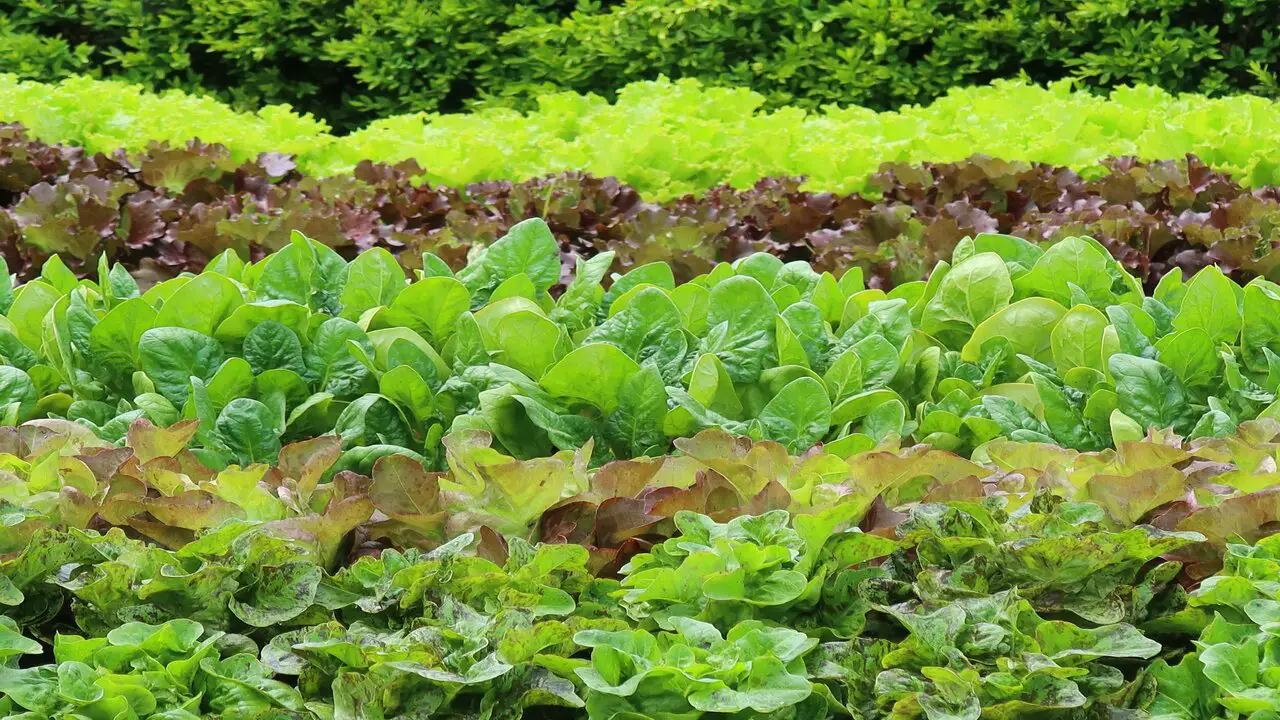
Proper care of romaine lettuce is essential for successful growth and a bountiful harvest. Here are some tips to help you care for your romaine lettuce plants:
- Soil: Romaine lettuce thrives in well-draining soil rich in organic matter. Before planting, prepare the soil by adding compost or well-rotted manure to improve its fertility.
- Sunlight: Romaine lettuce prefers full sun but can tolerate partial shade. Choose a location that receives at least 6-8 hours of sunlight daily.
- Watering: Keep the soil consistently moist but not waterlogged. Water deeply and regularly, especially during dry spells, to prevent the plants from wilting or drying out.
- Fertilizer: Apply a balanced nitrogen-rich fertilizer every two weeks to promote healthy leaf growth. Avoid over-fertilizing, as this can lead to excessive foliage with less flavor.
- Pest And Disease Control: Monitor your romaine lettuce plants for common pests such as aphids, slugs, and snails. Use organic pest control methods like handpicking or applying neem oil if necessary.
- Harvesting: Romaine lettuce is ready to be harvested when the heads are firm and compact. Cut the leaves just above the crown, leaving about an inch of stem attached for regrowth.
Following these care tips, you can ensure that your romaine lettuce plants thrive and provide delicious, homegrown greens throughout the growing season.
Conclusion
To master Growing Romaine Lettuce From Seed To-Harvest, you must understand the different varieties, planting techniques, and care required. Whether you choose to start from transplants, sow seeds indoors, or directly plant seeds outdoors, providing the right conditions for optimal growth is essential.
Specific tips like providing sufficient sunlight, watering adequately, and eyeing for pests and diseases will help you achieve a bountiful harvest. You can enjoy fresh and crisp romaine lettuce straight from your garden with proper care and attention. So, roll up your sleeves, and embark on a fulfilling journey of growing romaine lettuce from seed to harvest.
Frequently Asked Questions
1.How Many Times Can You Regrow Romaine Lettuce?
Ans: Romaine lettuce can be regrown 1-2 times after the initial harvest. Leave about 2 inches of the stem intact and place it in water. Change the water every few days and keep it in a sunny spot. Once new leaves appear, transfer them to the soil for further growth.
2.Is Romaine Lettuce Easy To Grow From Seed?
Ans: Romaine lettuce is indeed easy to grow from seed. This leafy green vegetable thrives in cooler temperatures and prefers moist soil. Remember to thin the seedlings for proper spacing, and you can harvest the lettuce when the leaves are firm and full-sized.
3.How Long Does It Take To Transplant Lettuce From Seed?
Ans: Transplanting lettuce from seed typically takes around 4-6 weeks. It’s important to wait until the seedlings have at least two true leaves before transplanting. The ideal transplant time is when the plants are between 3-4 weeks old. To ensure successful transplantation, harden off the seedlings by gradually exposing them to outdoor conditions before planting them in the garden.
4.Is Romaine Lettuce Hard To Grow?
Ans: Growing romaine lettuce from seed to harvest is a rewarding experience, even for beginners. You can easily cultivate this leafy green with fertile soil, consistent watering, and full sun exposure. Proper care and attention will yield a bountiful harvest of fresh romaine lettuce, whether you plant in the spring or fall.
5.Should I Grow Romaine Lettuce From Seeds Or Plants?
Ans: Growing romaine lettuce from seeds or plants has its advantages. Starting from seeds gives you more control over the growing process and a wider variety selection. On the other hand, using plants saves time and effort, which is great for beginners. Ultimately, the choice depends on personal preference and available resources.

